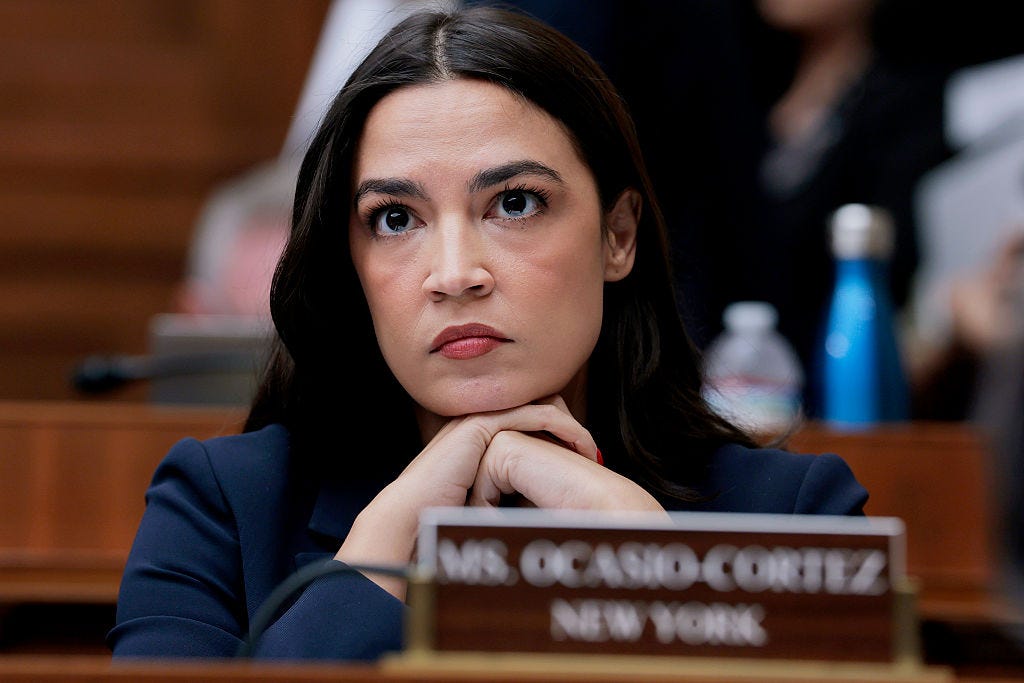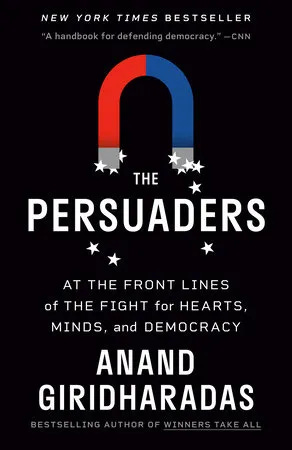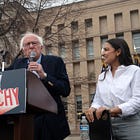SUMMER READING: The inside-outside game, part four
Can a renegade make peace with the system -- and even change it?
Poking the bear can build power, but it doesn’t build bridges.
Today’s excerpt from The Persuaders: At the Front Lines of the Fight for Hearts, Minds, and Democracy looks at how, during her first term in Congress, Representative Alexandria Ocasio-Cortez learned when to engage in combat — and when to play the inside game.
Ocasio-Cortez’s strategies and tactics were very different than those of Bernie Sanders. As she built a reputation as a fierce interrogator during House hearings and challenged the leadership and direction of the Democratic Party, she built on what she had learned from Sanders. But she was keeping the lessons she learned from her mentor, Ernesto Nieto, in mind too, and began to stake out a position that was uncompromising and pragmatic, working towards movement goals using the tools of electoral politics.
For our supporting subscribers, we are presenting this profile of Alexandria Ocasio-Cortez in installments this week. For previous installments, click on the links below; read on below for the fourth part, and look out for the conclusion of the story tomorrow.
The inside-outside game, part four
She took a risk in opposing Amazon’s bid to locate a new headquarters in New York, in the shadow of her district. A risk because the Amazon site would supposedly have generated many jobs. But she saw the giant tax breaks local officials had offered the company and came out swinging. She told me at the time, for an essay in The New Yorker, that the deal was “dressed-up trickle-down economics.” “What we’re seeing here is a complete public cost for a private corporate benefit,” she said. “When you give a three-billion-dollar tax break to the richest company in the world, that means that you’re giving up our schools. You’re giving up our infrastructure. You’re giving up our community development.” Eventually, Amazon withdrew from the deal. It was later reported to have dramatically expanded its workforce in New York, without any tax breaks needed.
Ocasio-Cortez also began to make waves in legislative hearings, in particular with a rotisserie grilling of Michael Cohen, Trump’s former lawyer, in late February. Thereafter, several of her committee-hearing moments went viral, revealing, once again, her talent for accommodating disparate qualities: she was the diligent student who had done all of her homework, and she was the performer who knew how to create a moment millions would watch. “A lot of people expected a show pony. But it turns out she’s a workhorse,” Caroline Fredrickson, a longtime legal operative in official Washington, told The Guardian.
In parallel, she proceeded with her bear poking. On a visit to the South by Southwest conference in Austin, she called capitalism “unsustainable” and “irredeemable” and did not mince words about the more incrementalist approach associated with many of her own Democratic colleagues. “This idea of like 10 percent better than garbage shouldn’t be something we settle for,” she said. When challenged about her use of the label “democratic socialist,” Ocasio-Cortez did not back down or try to soften her views. “When millennials talk about concepts like democratic socialism, we’re not talking about these kinds of ‘Red Scare’ boogeyman,” she told Business Insider. “We’re talking about countries and systems that already exist that have already been proven to be successful in the modern world.” She called Trump a “fascist” before many members of Congress would, and referred to the border camps where his administration had directed the separation of families as “concentration camps.” Once again, an increasingly familiar loop would play out. She would go online to defend her provocation. Outrage would swell among her critics. And then some serious people would weigh in, having her back. In this case, the Holocaust Memorial Museum in Washington, D.C., put out a statement condemning her use of “concentration camps.” Soon afterward, though, hundreds of scholars organized to sign a letter taking her side of the argument. In this case, it was hard to accuse her of taking the provocative stance for demagogic purposes, because just 25 percent of Americans agreed with her use of the term, according to a poll. But that didn’t seem to matter. For good measure, around that time Ocasio-Cortez also suggested that the Department of Homeland Security be abolished.








